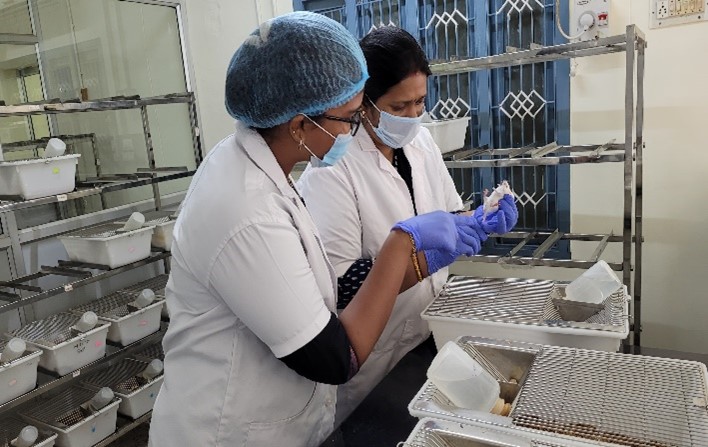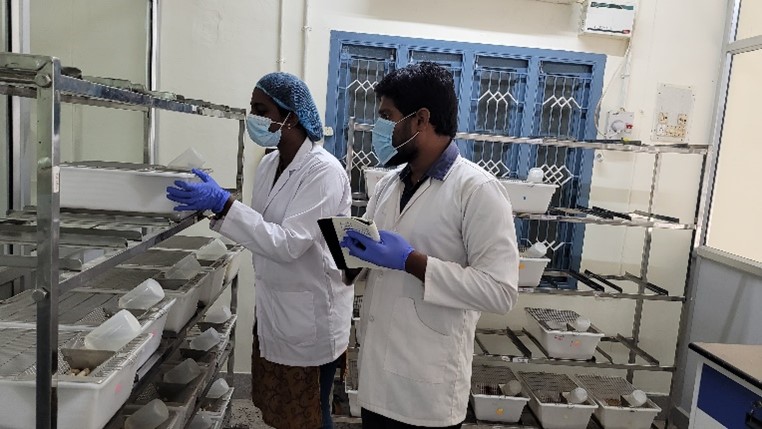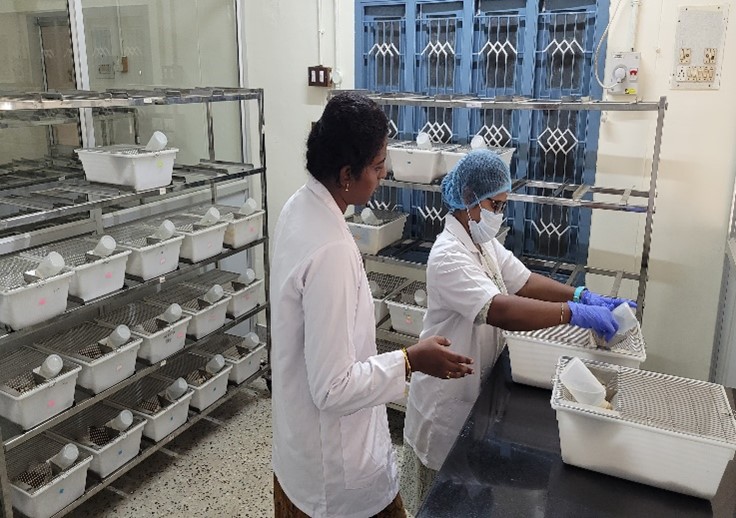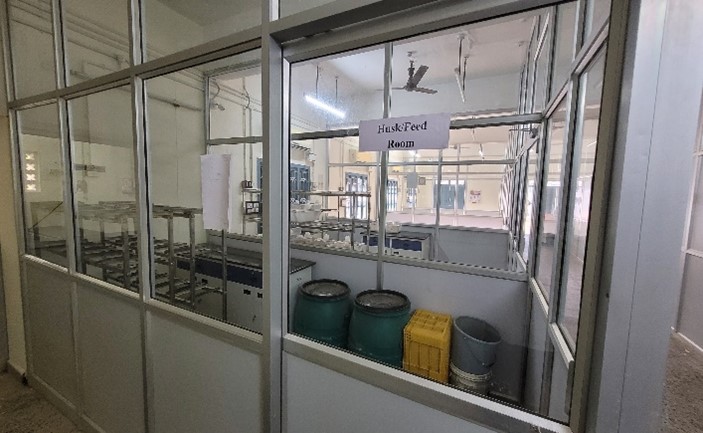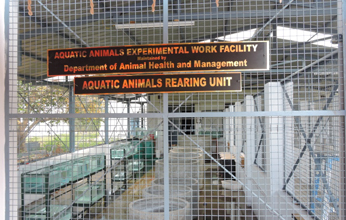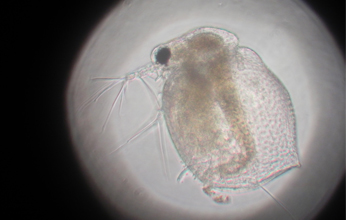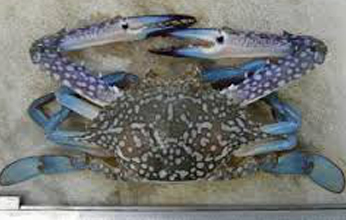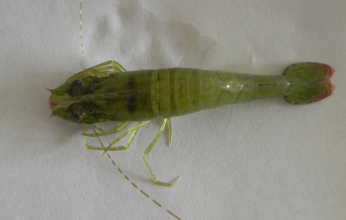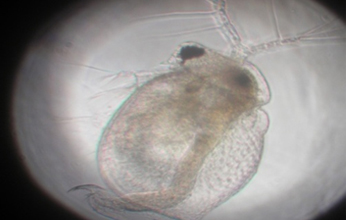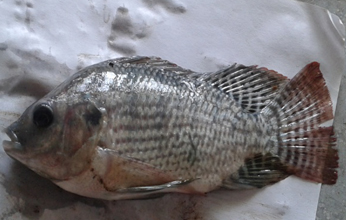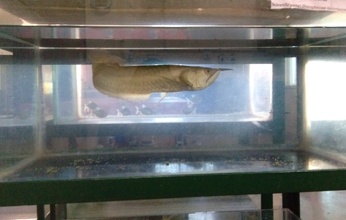Animal House was established in the Science Campus of Alagappa University (AU) with the financial support of the Department of Science and Technology (DST), Ministry of Science and Technology, Government of India under Fund for Improvement of S&T Infrastructure in Higher Educational Institutions (FIST-Level I- Phase II) Scheme sanctioned to the Department of Biotechnology, Alagappa University (SR/FST/LSI-639-2015(C) dated 02.06.2016). The AU animal house operates in accordance with the guidelines proposed by the Committee for Control and Supervision of Experiments on Animals (CCSEA), New Delhi, with the main objective of conducting research in small animals such as rats and mice. The IAEC of AU was constituted on 27.01.2017 and subsequent to the inspection of the animal house by the CCSEA Nominee on 10.12.2017, the IAEC of AU was officially registered with CCSEA, New Delhi on March 14, 2018 (for a five-year period) for three purposes, viz., (a) Registration for the purpose of Research for education (Code Re), (b) Registration for the purpose of Research (Code R) and (c) Registration for Breeding for in-house use (Code Bi). After the registration expired on 13.03.2023, the committee was reconstituted and reregistered with the CCSEA, with the validity extended until 22.08.2028.
The animal house has proper ventilation and adequate infrastructure facilities on par with the requirements of CCSEA. The facilities available are listed below
- LAF Room: Aseptic room with a Laminar flow to perform the experiments under aseptic conditions
- Experimentation Room 1 and 2: The experimentation room is equipped with racks to keep the cages and to perform the experiments in the animals
- Breeding Room: Separate room with cages for breeding the animals
- Feed Room and Husk Room: For storing the feed and husk required for the animals
- Cage Room: For storing the excess cage, which can be used when it is needed for keeping the experimental animals
- Quarantine Room: To quarantine the animals if any injury or abnormal behavior is noticed in the animals
- Autoclave Room: Installed with an autoclave to sterilize the materials required for performing the experiments in the animals
- Wash room: with proper sinks and water facility to clean the cages and to wash the other materials required for the experiments
- Office Room: Has file storage space to maintain the records related to the animal house
- Incinerator: for proper disposal of the bio-waste materials generated in the animal house
The animal house of AU caters to the need of sheltering the animals and utilizing them for the various research activities, with prior approval from the IAEC, AU. Rats (Wistar Strain/Sprague Dawley) and Mice (Swiss albino) are maintained in the Animal House which is utilized for both education and research purposes. Main focus of research activities carried out includes drug discovery and toxicological studies. Six meetings have been conducted so far, in which 72 proposals have been considered.
The assigned Animal care taker maintains the cleanliness of the animal house. The veterinarian of the animal house ensures the welfare of the animals housed and makes certain that the experiments are carried out in accordance with the ethical guidelines set out by the CCSEA, New Delhi.
Institutional Animal Ethics Committee (IAEC)| Registration No | : | 2007/GO/ReBi/S/18/CCSEA |
| Date of Registration | : | 14/03/2018 |
| Registration valid till | : | 22/08/2028 |
| Purpose of Registration | : | Small animal:- Research for Education purpose, Breeding for in-house use |
| Type of Animal House Facility | : | Small Animal Facility |
The Marine & Freshwater Aquaculture Research Program is developing innovative technologies to produce fishes and invertebrates to meet our growing national demand for seafood and to restock depleted recreational and commercial stocks. Research is directed toward designing and testing filtration technologies for sustainable recirculating systems and toward developing spawning, larval rearing and growout culture methods for marine or freshwater species including ornamental fishes. In view of the above fact, the Aquatic Animals Rearing Unit and Vermiculture Unit are established and maintained within the Animal House by Department of Animal Health and Management. The animal house is situated adjacent to the Science block of Alagappa University.
The Commonly Available Species are- Blue swimmer crab Portunus pelagicus
- Green tiger shrimp Peneaus semisulcatus
- Zooplanktons Moina micrura and Ceriodaphnia cornuta
- Tilapia: Oreochrompis mosombicus
Many people are involved in ornamental fish rearing and trade practices adding sizeable income to their households. Ornamental Fish Breeding involves simple technical inputs and infrastructure. The prospects of developing ornamental fish breeding in rural areas by involving Self Help Groups are high. The capital investments are less with good returns. In recent years, ornamental fishes are receiving increased attention due to the local and global demand and the consequent growth of the export market and trade. Dept. of animal Health using the aquatic rearing unit to conduct the following research:
- Preparation of medicine for controlling fungal and bacterial diseases.
- To standardize breeding protocols for mass production of ornamental fishes.
- Water quality and disease testing lab services.
- Live feed culture.
- Probiotic and Prebiotics.
- Colour enhancement in ornamental fishes.
The most important ornamental fishes are: Arowana fish, Zebra fish, Guppy, Flower Horn and Cichlids











